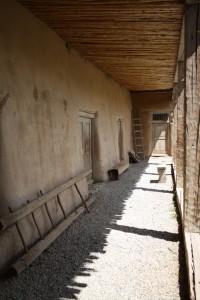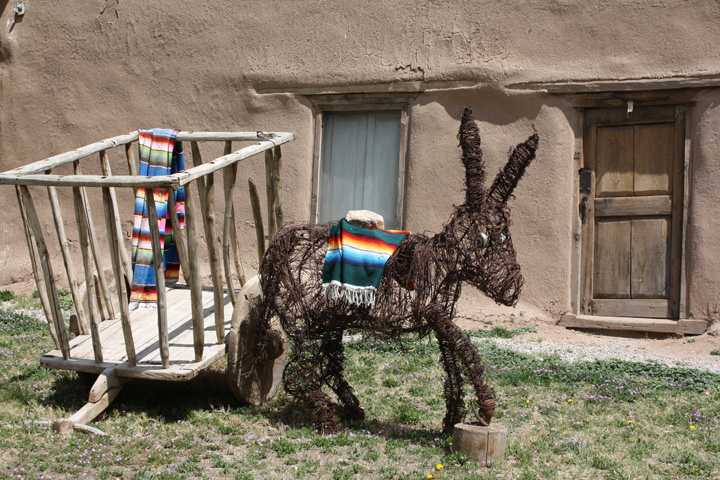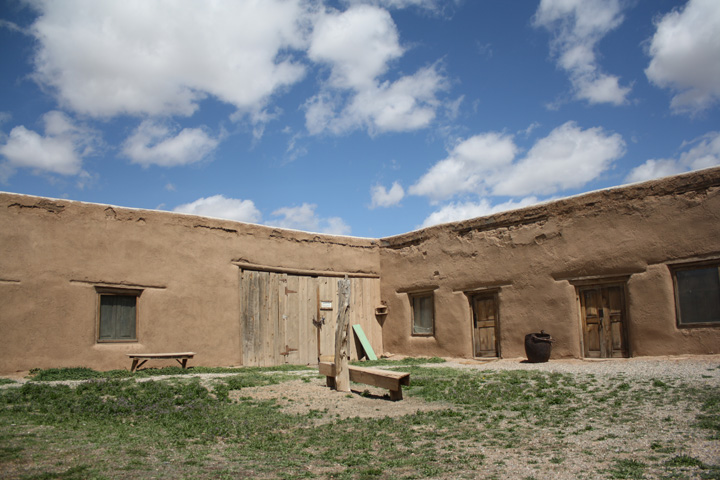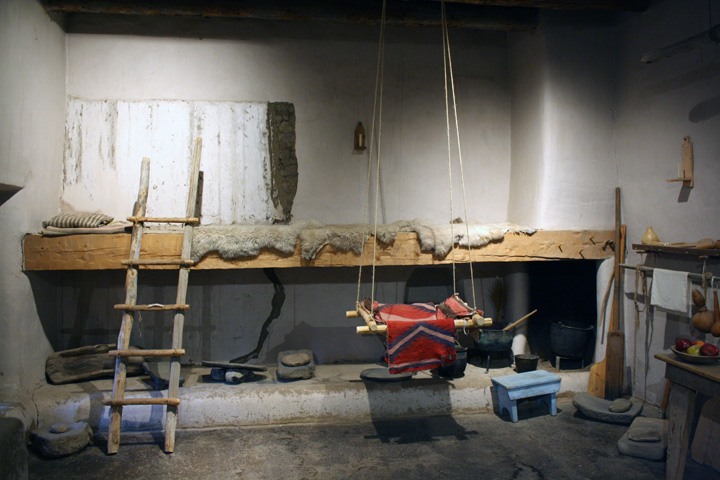 There is a quaint wooden bridge that crosses over the sparkling Rio Pueblo as it meanders past the Hacienda de los Martinez (sometimes called The Martinez Hacienda). This bridge leads directly to the Hacienda from the main parking lot, located just off Lower Ranchitos Road. There is the option of parking right outside the building, but this lot is reserved for deliveries or handicapped. Besides, the act of walking across the bridge and just a few extra feet allows one to enter the space of history. You can imagine what it would be like to come upon this massive structure as a weary traveler, most likely carrying goods for trade.
There is a quaint wooden bridge that crosses over the sparkling Rio Pueblo as it meanders past the Hacienda de los Martinez (sometimes called The Martinez Hacienda). This bridge leads directly to the Hacienda from the main parking lot, located just off Lower Ranchitos Road. There is the option of parking right outside the building, but this lot is reserved for deliveries or handicapped. Besides, the act of walking across the bridge and just a few extra feet allows one to enter the space of history. You can imagine what it would be like to come upon this massive structure as a weary traveler, most likely carrying goods for trade.
The Hacienda was built as a home in the early 1800s by Severino Martinez for his family, but it was much more than a home. It had a multitude of functions, some economical – most prevalent of which was trade – and some community-oriented, like dances and possibly religious ceremonies. All told, it was a busy place. It’s quieter these days, but one can imagine the bustling activity that would have taken place here.
The building itself consists of two large placitas (courtyards) surrounded on all sides by a series of rooms, some connecting to each other. It was designed for security, and originally had only two doors to the outside and no windows. When you’re inside, you can’t help but feel safe, protected by massive adobe walls all around you. Despite its formidable construction, there is a softness, a grace in its design, a warmth in the earthen walls. The open placitas are large; their size possibly rivaling the square footage of the walled rooms. The people who lived and worked here spent a large portion of their lives outside, doing any number of activities, some household, but most particularly fiber production. The driving economic force at the time were sheep and the fiber they produced, and the Hacienda reflected this influence.
As one makes their way through the multitude of rooms, there can be found permanent exhibits, including religious artifacts like santos; and rotating exhibits, both historical and cultural. Other rooms are furnished with period pieces to reflect what life was like here and show a fascinating glimpse of a time vastly different from now. I find the cocina (kitchen) to be the most intriguing and beautiful of all the rooms. After all, our kitchens are frequently the heart of our homes, the place where we are nourished, and the Hacienda’s kitchen is no different. However, their kitchen wasn’t just for cooking – there is a uniqueness in this space, the existence of a fogan de pastor, a type of bed that hovers above a cooking area. Essentially, a warm bed directly over a stove! Elderly or sick family members could rest here or children could play here, as well.
When visiting the Hacienda, be sure to allow enough time to really absorb the details of the place; there’s a richness here that can be missed if one hurries. We are fortunate to have such a historical example preserved for us to enjoy. This beautiful and important piece of Taos history could have been lost forever, reduced to a small mound of adobe bricks, as it was in serious disrepair in the early 1960s. But a series of dedicated restoration efforts brought it back to life, and it stands today.
The Hacienda de los Martinez is part of the Taos Historic Museums. Visit their website for more information on admission and visiting hours. www.taoshistoricmuseums.org



